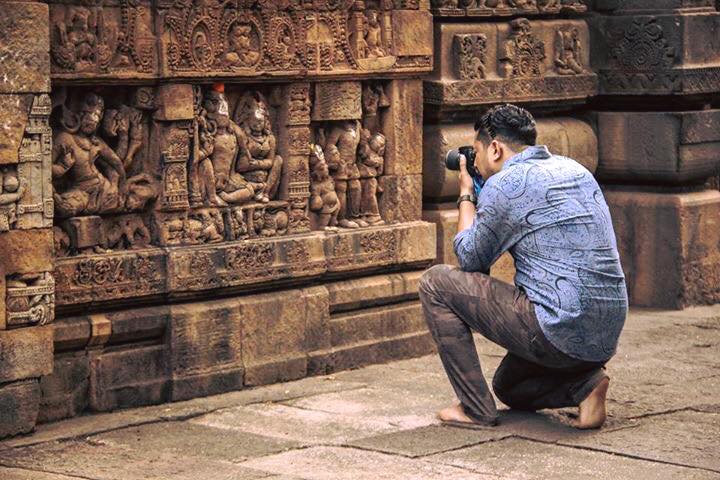By Uttirna Gnanadipta

Bhubaneswar: The epithet of Temple City that Bhubaneswar has earned is well deserved. Legend has it that the city once had one short of a lakh temples, small and big. A majority of these temples have perished over the centuries. But the few that remain intact speak of the exquisite craftsmanship of the sculptors and artisans of ancient Odisha. The immaculate design, the elaborate ornamentation, the breathtaking range of motifs and the sheer beauty of the figurines carved on stone leave the commoner awestruck and connoisseur marvelling.
The vast majority of these temples are spread out in the Old Town area, which still retains its old world charm despite being nestled amid the modern props of a Smart City. History whispers from every bylane and alley of the Old Town, but was rarely heard by outsiders till ‘Ekamra Walks’, a joint initiative of Bhubaneswar Municipal Corporation (BMC), Bhubaneswar Development Authority (BDA) and Odisha Tourism, began.
‘Ekamra Walks’ is the city’s first guided heritage walk that aims to spread the word about Kalingan temples around. It is a weekly exercise that tells you stories about temples and the culture associated with it, about how ‘Ekamra Kshetra’, aka Old Town, is still rooted to its old temple traditions.
A walk through the alleyways reveals a lot about the lifestyles of the people living in the area. With its archaic looking houses and other structures and the leisurely life, it is a throwback to the ancient times, in sharp contrast to the busy, bustling, breathless life in the city all around it. Temples form an integral part of life in these parts

It’s the stones depicted on the temple walls that make the heritage walk interesting and worthwhile. The ‘stories on stone’ are as much about their presiding deities as the skillful workers of yore who have depicted the motifs with utmost precision. With a galaxy of gods, goddesses, angels, animals and birds and other motifs, the temple walls are a wonderful convergence of culture and tradition.
Guide Satya Mishra explains the architectural style of each temple and how each motif depicted on the walls has evolved out of the culture and growing cults of the time.
He then goes on to explain the structure of the Kalingan temples. The usual two-part structure of a Kalingan temple can be seen in the Parsurameswar temple (7th Century).Two more structures were added to its front part later making it a superstructure. The other two structures were the Natamandira (dancing hall) and Bhogamandapa (offerings hall).
Among the temples that are part of the heritage walk are Mukteswar, Parsurameswar, Kotitirtheswar, Bindusagar, Ananta Basudev, old Dharmashala, Lingaraj, Chitrakarini, Sari Deula and Vaitaal Deula. The Vaital Deul, a Khakra style temple, is unique to the state as the semi cylindrical shape of its roof has similarities with the Dravidian Gopuram seen in South Indian temples.
The walk ends with a visit to the Ekamravan (medicinal plant garden) where Ashok Mishra, Assistant Conservator of Forest (ACF) briefs visitors about the many medicinal plants, which are an integral part of the temple tradition, in dire need of conservation. This garden is spread along the embankment of the Bindusagar Tank, which needs the urgent attention of the authorities for its rejuvenation.The walkers are also made aware about the need for conserving an old temple tank that serves as the lifeline for the people of that area.




 Ms Kalinga
Ms Kalinga